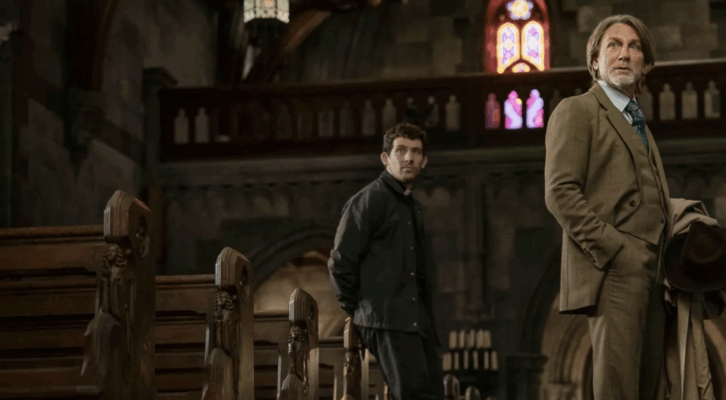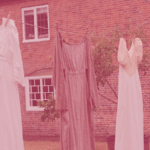In the eighteenth and early nineteenth century, reports of crimes attributed to ghosts abounded in mainstream newspapers. But few of these stories garnered fervent attention like the mystery of a farmhouse just outside Antigonish, Nova Scotia. Headlines such as “Fairies and Imps Invade Hills of Antigonish Co.,” “Ghost Is Charged With Many Crimes,” and “Haunted House Terrors Grow, Baffle Watch” entertained readers across the U.S. and Canada.
Alexander MacDonald had built the house in 1887. He lived there with his wife Janet and their adopted teenaged daughter Mary Ellen.
Around 1912, strange events began to plague the farm. Balls of light floated through the air. Banging noises emanated from the house. Doors refused to open. People struggled to breathe. Unseen hands released cows from their barn. Horses’ manes were found braided. Laundry, rugs, and eating utensils were stolen, some later found buried, others discovered in the tops of trees. A mysterious hand was seen waving out of an upper story window when no one was home. A strange blue glow emanated from the ground and barn.
But it was a series of unexplained fires starting in 1922 that truly grasped the public’s attention. Seeming to sprout from no cause whatsoever, fires engulfed numerous items in the house. Walls, ceilings, and furniture erupted into flames when no one was nearby. The house had no electricity, so bad wiring could not be the root of the problem. Sometimes wads of cotton were found wedged into crevices and boxes, and these caught on fire. For many days, the family fought these mysterious fires around the clock, forced to throw blazing furniture out into the snow and extinguish burning wallpaper, pillowcases, and sheets.
Living in an area rich in folklore, locals blamed mischievous ghosts. Some thought Mary Ellen might be possessed, setting fires while under the influence of an evil spirit. Others thought methane gas or phosphorous might be the cause. The house stood between two powerful radio stations in Massachusetts and Nova Scotia, and a Boston scientist claimed that radio waves sweeping over the farm were causing spontaneous fires to ignite.
With the family having to constantly slap out fires, their lives were disrupted. On one particular night, the family and neighbors were forced to extinguish thirty-eight fires. Exhausted by these events, and worried they might die in the flames, the family eventually left, moving to a neighboring farm.
To root out the cause of this mystery, Halifax Herald publisher William Dennis reached out to experts, including Sir Arthur Conan Doyle, who despite his interest in the case, declined to visit the farmhouse. Instead, detective Peter Owen Carroll agreed to come out and investigate. Joined by reporter Harold Whidden, they interviewed witnesses and ventured out to the farmhouse. Though alone, they heard someone walking on the floor above. Carroll felt someone touch his wrist as he lay down to sleep and Whidden reported being slapped by an unseen hand. Searches of the house turned up no one. The two men concluded that the strange events had not been caused by human hands.
“Antigonish,” a poem that had been written years before by William Hughes Mearns about a different haunting in Antigonish, was published again in 1922 amidst the fervor, and the lines caught on:
Last night I saw upon the stair
A little man who wasn’t there
He wasn’t there again today
Oh how I wish he’d go away.
With story after story about the Antigonish haunting appearing in newspapers across the U.S. and Canada, the “little man who wasn’t there,” seeped into the mainstream, eventually infiltrating popular culture in the form of songs. Glenn Miller’s “The Little Man Who Wasn’t There” was a smash hit in 1939, and the “little man” is also referenced in the hilariously wonderful and strange song “Who’s Yahoodi,” recorded in 1940 by both Kay Kyser and Cab Calloway.
In early 1922, Dr. Walter Prince of the American Society for Psychical Research read Whidden’s articles and was intrigued. Farm owner Alexander MacDonald offered to join him, and teenager Mary Ellen came along at Prince’s insistence. During their time at the house, Whidden experienced episodes of automatic writing, scribbling on sheets of paper that spirits had caused all of the mysterious events. While Prince believed that what happened to Whidden and Carroll were truly paranormal, he blamed the fires on the teenager Mary Ellen, concluding that she might be possessed.
Sir Arthur Conan Doyle, who had kept up with the case, concurred. “I have no doubt at all that the spiritualist explanation of the Antigonish mystery was correct,” he said. “Mary Ellen, the medium, threw out some power which was used by something malevolent outside herself.”
Sadly, after another fire, she was committed to the Nova Scotia Hospital for the Insane, where she remained for several years before being released and moving on with her life.
Eventually the details of the Antigonish haunting faded. Gone are the days when mainstream headlines focused on ghostly tales. These days one must consult more fringe publications such as Fate Magazine and Fortean Times to delve into spectral stories.
But the “little man who wasn’t there” continues to haunt our culture to this day. Crime drama fans have seen it referenced in contemporary music and TV shows such as Father Brown, Midsomer Murders, Death in Paradise, and more.
The “little man” may not be there, but the legacy of the haunting of the farmhouse in Antigonish very much remains.
***


















